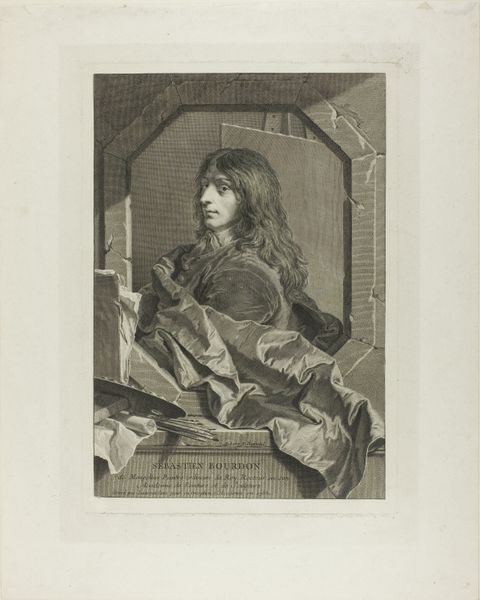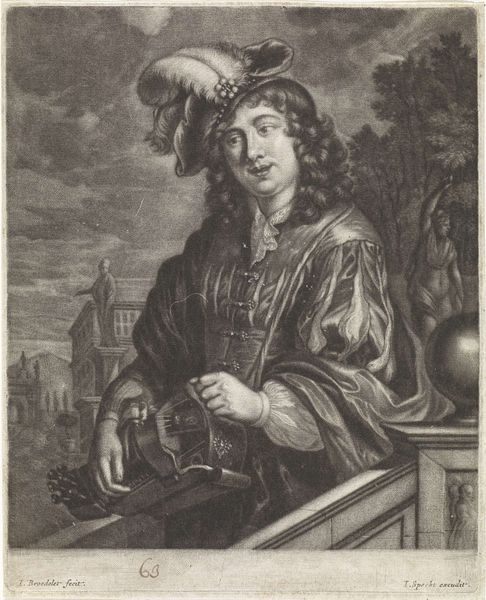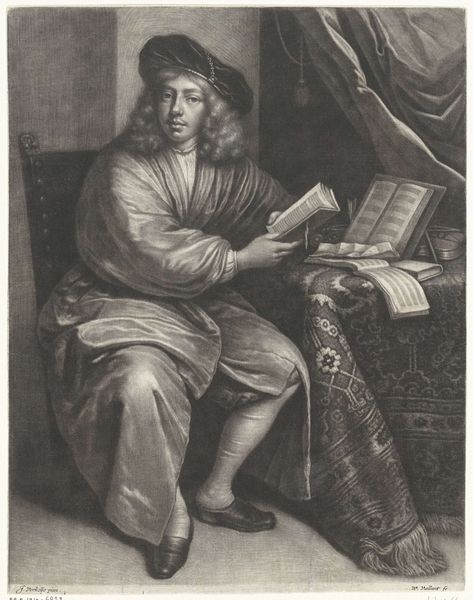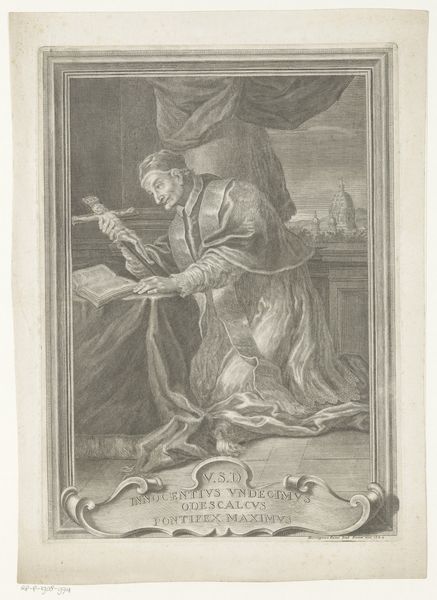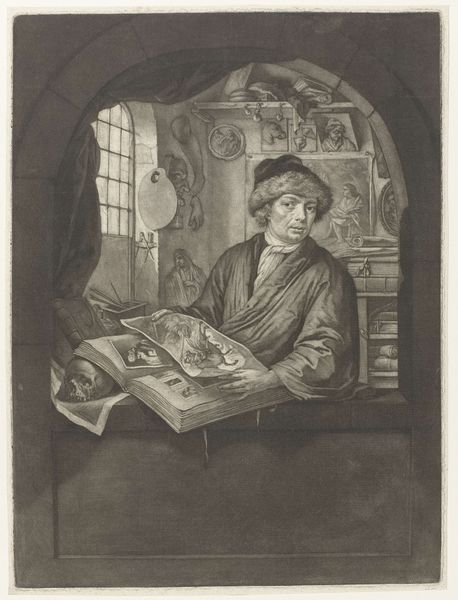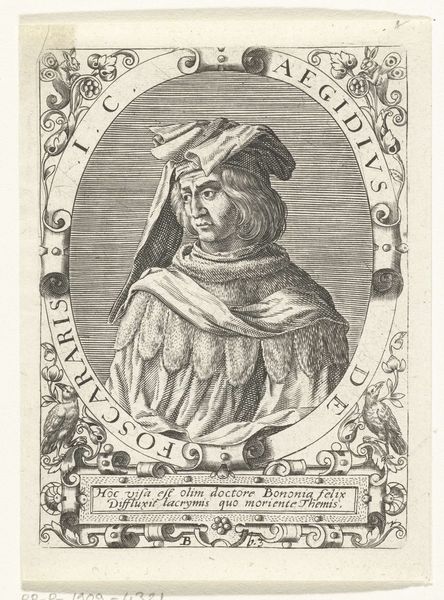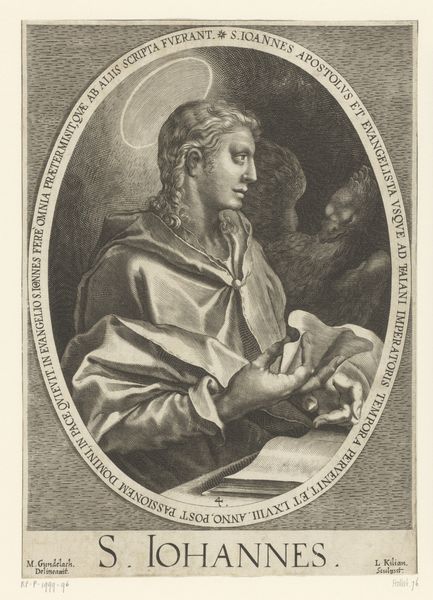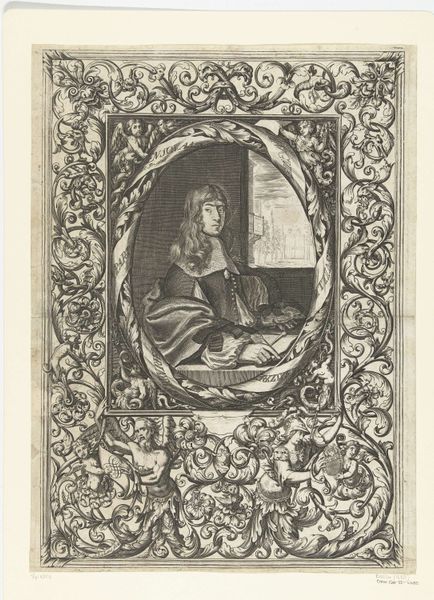
engraving
#
portrait
#
baroque
#
dutch-golden-age
#
figuration
#
line
#
history-painting
#
engraving
Dimensions: height 457 mm, width 357 mm
Copyright: Rijks Museum: Open Domain
This is Lambert Visscher’s portrait of Johannes Cornelisz Silvius, made in the Netherlands around the middle of the 17th century. It's an engraving, meaning the image is created by cutting lines into a metal plate, inking it, and then pressing paper against the plate. Silvius was a pastor of the German Reformed Church in Amsterdam. The portrait presents him as a figure of learning and piety. He's shown with a large book, presumably the Bible, and surrounded by other books and writing implements. The setting evokes a scholar's study. This image reflects the cultural and religious values of the Dutch Republic during the Golden Age. The Dutch Reformed Church played a significant role in society. Portraits like this served to celebrate and promote the values of religious devotion and intellectual pursuits. As art historians, we delve into archives, theological texts, and social histories to understand the full meaning of images like this. Art is never created in a vacuum; it's always shaped by the social and institutional forces of its time.
Comments
No comments
Be the first to comment and join the conversation on the ultimate creative platform.
